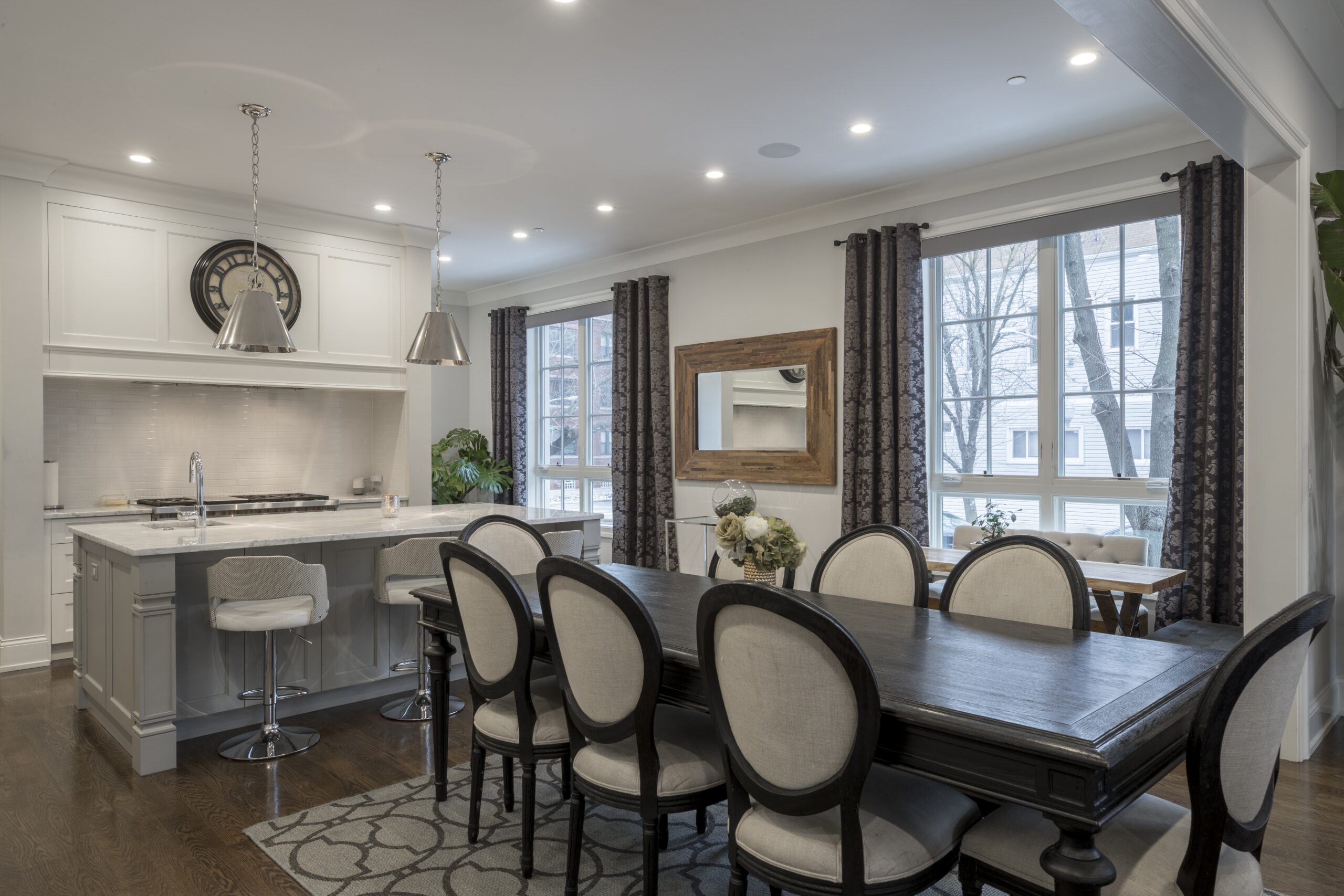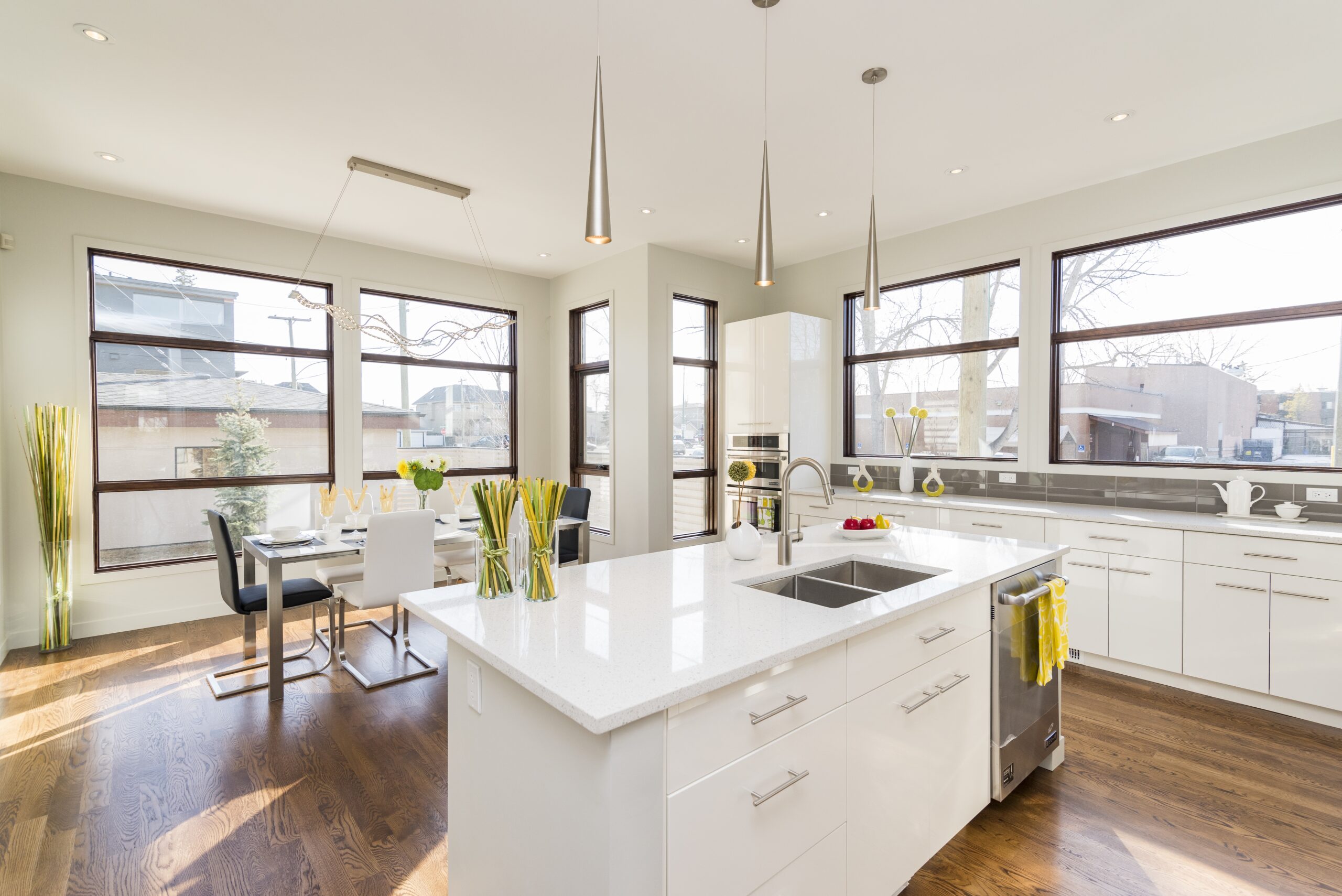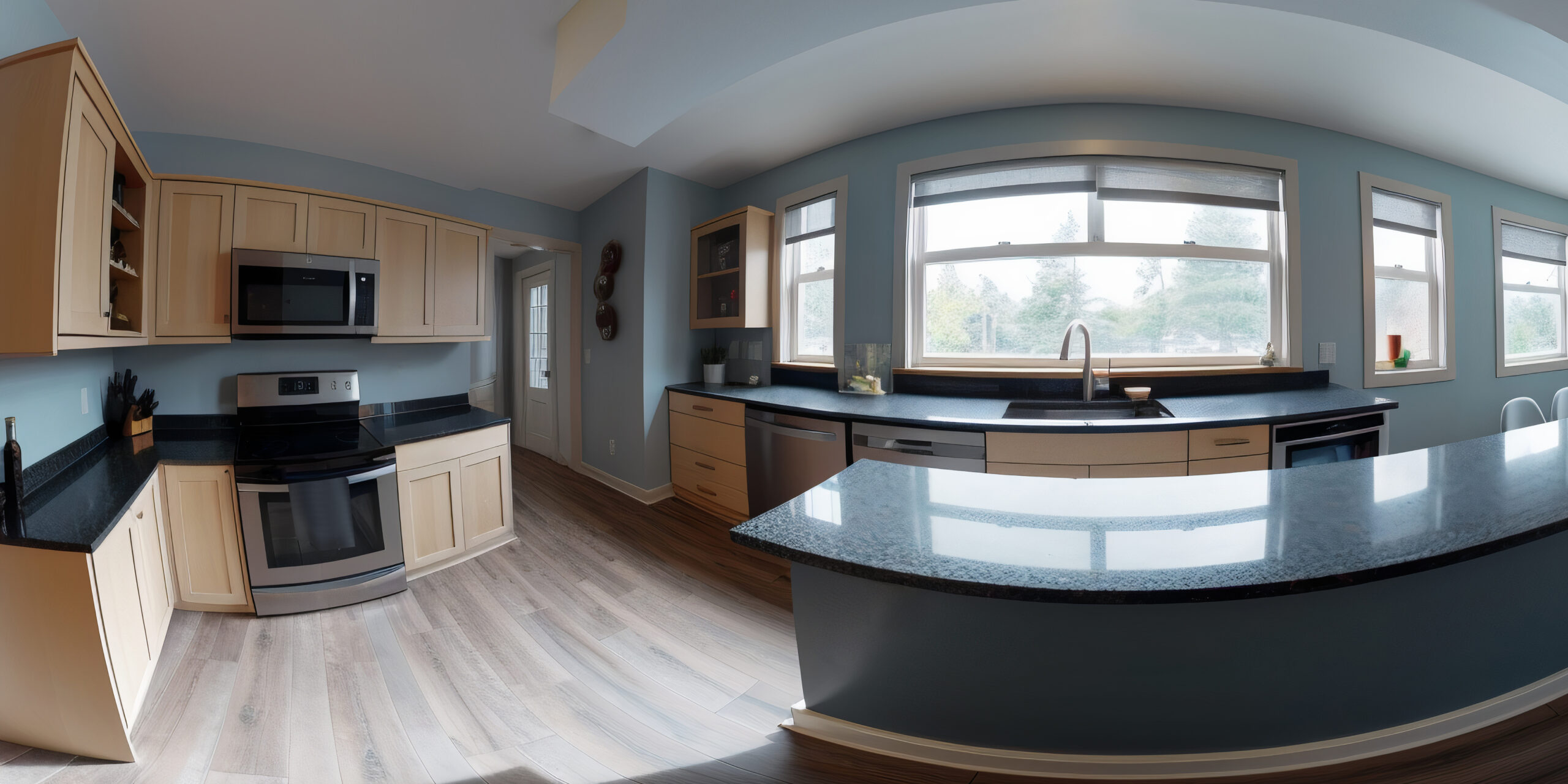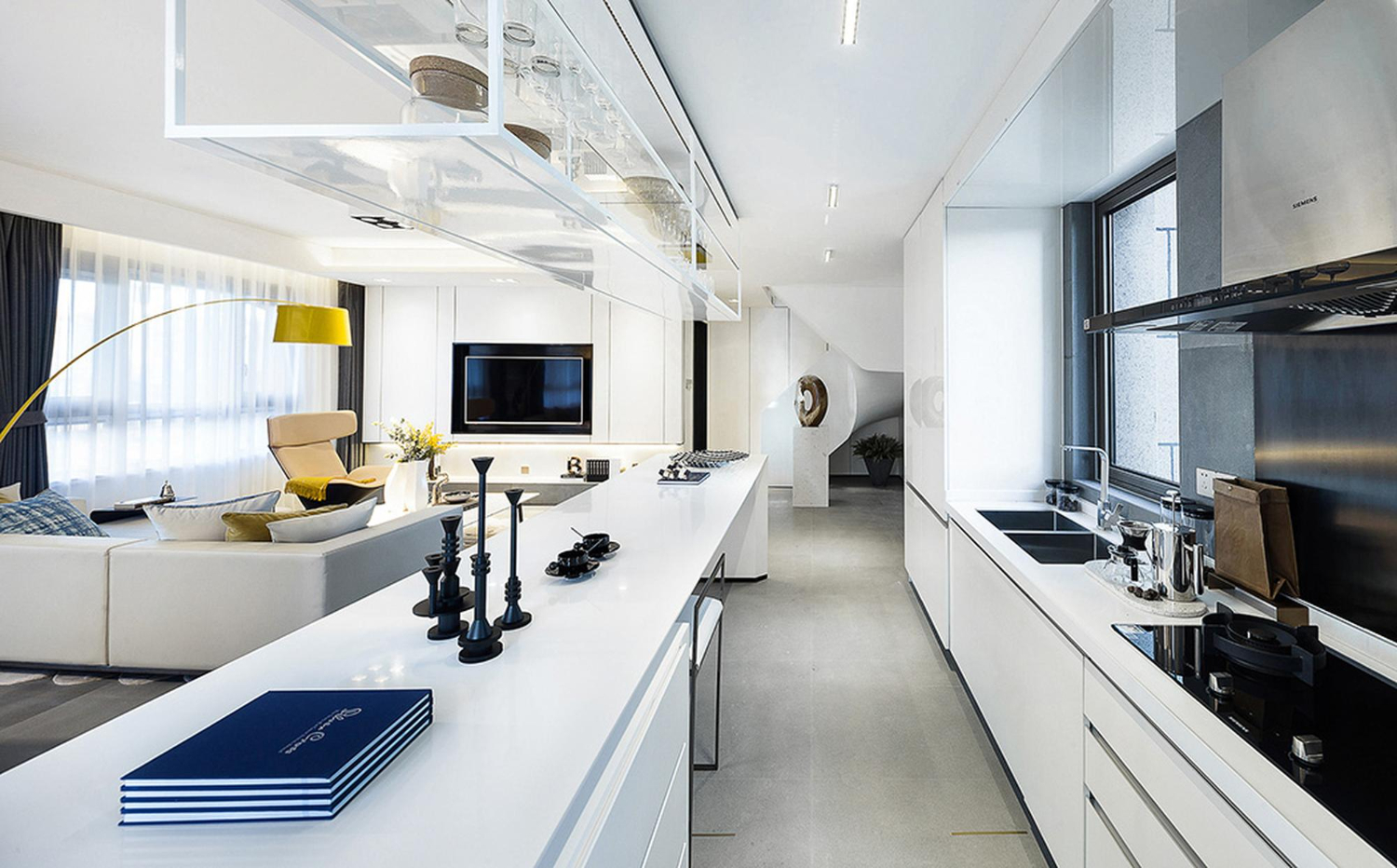Open-Concept Kitchen Remodels: Balancing Flow and Function in New England Homes
Transform your traditional New England home with an open-concept kitchen that honors architectural heritage while embracing modern living.
At Golden Hammer Remodeling, we’ve helped countless homeowners in Lexington, Newton, and throughout the Boston metro area navigate the exciting challenge of creating open-concept kitchens in traditional New England homes. These classic homes, with their compartmentalized layouts and period details, weren’t originally designed for today’s open-living preferences. However, with thoughtful planning and expert execution, we can create flowing, functional spaces that respect your home’s architectural integrity while meeting your family’s modern lifestyle needs. The key lies in understanding how to remove walls safely, maintain structural integrity, and create seamless transitions that feel both spacious and intimate.
Opening up your kitchen isn’t just about removing walls—it’s about reimagining how your family lives, entertains, and connects in your home. When done correctly, an open-concept kitchen becomes the heart of your home, facilitating conversation and connection while maintaining the distinct zones necessary for efficient cooking and comfortable living.

1. Structural Considerations for New England Homes
Before any walls come down, understanding your home’s structural system is crucial for a successful open-concept renovation. Many New England homes built before 1950 feature load-bearing walls that require careful engineering solutions.
At Golden Hammer Remodeling, we always begin with a thorough structural assessment by licensed engineers. Traditional New England construction often includes center bearing walls that support floor joists above, and removing these walls requires installing beams or other structural supports. The good news is that exposed beams can become beautiful architectural features that add character to your open space.
Post-and-beam construction, common in older New England homes, actually lends itself well to open-concept renovations. These homes were built with substantial structural timbers that often allow for more flexibility in wall removal than modern stick-frame construction. However, each home is unique, and proper engineering ensures your renovation is both safe and successful.
Foundation considerations are particularly important in older homes. We often need to add support posts or modify basement areas to accommodate new structural loads. These modifications can usually be integrated seamlessly into your basement finishing plans, creating additional value throughout your home.
Working with local building codes and permit requirements is essential. Massachusetts building codes have specific requirements for structural modifications, and our experience with local building departments ensures smooth permit approval and inspection processes.

2. Creating Defined Zones Within Open Spaces
One of the biggest challenges in open-concept design is maintaining functional separation between cooking, dining, and living areas while preserving the sense of openness that makes these layouts so appealing.
Kitchen islands serve as natural boundaries between cooking and living spaces while providing additional storage, seating, and work surface. At Golden Hammer Remodeling, we design islands that are proportional to your space—typically 4 to 6 feet long in most New England homes—and position them to facilitate traffic flow while defining the kitchen zone.
Ceiling treatments can subtly define different areas without creating physical barriers. Coffered ceilings over dining areas, exposed beams over kitchens, or tray ceilings in living spaces create visual separation while maintaining openness. These treatments work particularly well in homes with 9-foot or higher ceilings, common in many New England colonials and Victorians.
Flooring transitions can also define spaces effectively. Hardwood in living and dining areas with tile or luxury vinyl in the kitchen creates practical boundaries while maintaining visual flow. We often recommend using complementary materials—such as wide-plank oak throughout with a herringbone pattern in the kitchen—to create subtle definition.
Furniture placement becomes crucial in open-concept spaces. Strategic positioning of sofas, dining tables, and bar stools helps define functional zones while maintaining sight lines and conversation flow. Built-in banquettes or window seats can provide additional seating while creating natural room divisions.
3. Maintaining Period Character in Modern Layouts
New England homes are beloved for their architectural character, and successful open-concept renovations preserve and celebrate these historic details rather than eliminating them.
Original millwork, including door and window casings, baseboards, and crown molding, should be preserved and extended into newly opened spaces. At Golden Hammer Remodeling, we often salvage original trim pieces and have them replicated by skilled craftsmen to maintain consistency throughout the expanded space.
Exposed structural elements can become focal points rather than obstacles. Original hand-hewn beams, brick chimneys, and stone foundations add texture and history to open-concept spaces. We often highlight these features with strategic lighting and complementary finishes that celebrate their craftsmanship.
Window configurations in older homes can present challenges in open-concept designs, but they also provide opportunities for creative solutions. Mismatched window heights or styles can be unified through consistent trim treatments or interior shutters that create visual harmony while preserving original openings.
Fireplaces often become central features in open-concept spaces. Original brick or stone fireplaces can be restored and highlighted, while their mantels and surrounds provide natural focal points that anchor seating areas within the larger space.

4. Kitchen Design Strategies for Open Layouts
Designing the kitchen portion of an open-concept space requires balancing functionality with aesthetics, ensuring the kitchen works efficiently while looking beautiful from every angle in the connected spaces.
The kitchen work triangle becomes even more important in open layouts, where cooking activities are visible from living and dining areas. We design efficient triangles that minimize cross-traffic while keeping the kitchen functional and organized. This often means positioning the sink to face the living area, allowing the cook to interact with family and guests.
Storage solutions must be both functional and attractive since kitchen storage is visible from throughout the open space. We recommend a mix of closed and open storage, with frequently used items in closed cabinets and attractive dishes or glassware displayed on open shelves. Pantry storage becomes crucial, and we often design walk-in pantries or tall pantry cabinets that keep clutter hidden.
Appliance selection and placement require careful consideration in open layouts. Quiet operation becomes essential for dishwashers and range hoods, while appliance finishes should complement the overall design aesthetic. We often recommend panel-ready appliances that can be integrated seamlessly into cabinetry for a custom, built-in appearance.
Lighting design must serve both task and ambient functions. Under-cabinet lighting provides essential task illumination, while pendant lights over islands create focal points and ambient lighting. Recessed lighting throughout the space ensures even illumination without creating harsh shadows or dark corners.
5. Traffic Flow and Circulation Patterns
Successful open-concept designs facilitate natural movement patterns while preventing bottlenecks and conflicts between different activities.
The kitchen island position is critical for traffic flow. Islands should allow at least 42 inches of clearance on all sides for comfortable movement, with 48 inches preferred in high-traffic areas. We position islands to create natural pathways that don’t interfere with the kitchen work triangle or block sight lines between spaces.
Entry points into the open space must be carefully planned. Multiple access points prevent bottlenecks, but too many entrances can make the space feel chaotic. We typically recommend two to three well-positioned entrances that create natural circulation patterns without disrupting functional zones.
Sight lines throughout the space should be preserved to maintain the open feeling while allowing supervision of children and interaction between family members. This often means keeping island heights at 36 inches rather than bar height, ensuring clear views across the space.
Furniture placement should support rather than hinder traffic flow. We create furniture plans that define spaces while maintaining clear pathways, often using area rugs to visually define seating areas without creating physical barriers.

6. Lighting and Electrical Planning
Open-concept spaces require sophisticated lighting and electrical planning to serve multiple functions while maintaining aesthetic appeal throughout the connected areas.
Layered lighting approaches work best in open-concept designs. Ambient lighting provides overall illumination, task lighting focuses on specific activities, and accent lighting creates visual interest and defines different zones. This typically requires significantly more electrical circuits than traditional closed kitchens.
Natural light integration becomes crucial in open-concept spaces. We often recommend enlarging existing windows or adding new ones to flood the space with daylight. Skylights can be particularly effective in kitchen areas, providing even illumination for food preparation while adding architectural interest.
Electrical outlet planning must accommodate the increased electrical demands of open-concept living. Kitchen islands require dedicated circuits for appliances, while living areas need adequate outlets for electronics and lighting. We typically install more outlets than current code requires, anticipating future needs and lifestyle changes.
Smart home integration can enhance both functionality and convenience in open-concept spaces. Automated lighting systems allow you to create different scenes for cooking, entertaining, and relaxing, while smart switches and dimmers can be controlled from multiple locations throughout the space.
7. HVAC and Comfort Considerations
Heating, ventilation, and air conditioning systems must be redesigned to effectively serve larger, open spaces while maintaining comfort in all zones.
Ductwork modifications are often necessary when walls are removed, and this presents an opportunity to improve your home’s overall HVAC efficiency. We work with HVAC contractors to ensure adequate airflow throughout the open space while maintaining temperature control in adjacent rooms.
Kitchen ventilation becomes more critical in open-concept designs since cooking odors and moisture can affect the entire living space. We recommend high-capacity range hoods with variable speed controls and quiet operation. Proper ventilation planning also includes makeup air systems that prevent negative pressure issues common in tightly sealed modern homes.
Zoning systems can provide individual temperature control for different areas within the open space. This is particularly important in New England homes where seasonal temperature variations require flexible heating and cooling solutions.
Ceiling fans can provide additional air circulation and comfort while adding design elements to different zones within the open space. We select fans that complement the overall design aesthetic while providing practical benefits for air movement and energy efficiency.

At Golden Hammer Remodeling, we understand that creating an open-concept kitchen in a traditional New England home requires balancing respect for architectural heritage with modern living needs. Our approach focuses on preserving the character that makes these homes special while creating functional, beautiful spaces that enhance your daily life. Every project begins with careful structural assessment and thoughtful design planning to ensure your open-concept renovation is both safe and stunning.
Ready to transform your traditional New England home with an open-concept kitchen? Contact Golden Hammer Remodeling today to schedule a consultation. Our experienced team specializes in working with historic homes throughout the Boston metro area, and we’ll help you create a space that honors your home’s past while embracing your family’s future. From structural engineering to finish selection, we’ll guide you through every step of creating the open, flowing kitchen of your dreams.
Frequently Asked Questions (FAQ)
1. How much does an open-concept kitchen renovation typically cost in the Boston area?
2. Can load-bearing walls be safely removed in older New England homes?
3. Will removing walls affect my home's historical designation or value?
4. How do you handle different ceiling heights when opening up spaces?
5. What's the best way to handle kitchen odors and noise in an open-concept layout?
6. How do you maintain privacy and separation when needed in open-concept homes?
7. What permits are required for open-concept renovations in Massachusetts?
Blog
Looking for more insights? Explore our blog for expert tips, in-depth guides, and the latest trends.
Keep discovering more content to help you stay ahead!
